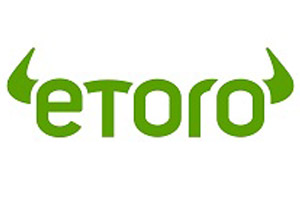Operating leverage can be seen as a measure of the rate at which a project or firm incurs a mixture of variable and fixed costs. A business which carries out sales that provide a gross margin which is very high and lesser variable and fixed costs has plenty of leverage. A higher rate of operating leverage will lead to probable danger from predicting risk, where a very slight error in predicting sales can aggravate into huge errors in the projection of cash flows.
The Best online trading Apps
| Forex Brokers | Min Deposit | Platforms | Max Leverage | Rating | Secure Link |
|---|---|---|---|---|---|
1  |
$250
|
MT4, MT5
|
1:30 | 4.9/5 | Visit Site Read Review |
BREAKING DOWN ‘OPERATING LEVERAGE
The breakeven point of a company can be calculated using operating leverage and it affects profits heavily by making a change to its pricing system. Since businesses which have a higher operating leverage barely increase their expenses in the same proportion as they increase their sales, such companies may acquire greater revenue than others. Nevertheless, companies which have a high operating leverage may be subjected to poor collective decisions coupled with other factors which may lead to a fall in revenues.
HIGH AND LOW OPERATING LEVERAGE
Comparing the operating leverage between companies in one industry is very important because several industries tend to have fixed costs which are higher than others. The notion of a low or high ratio can then be clearly known.
Most of the costs incurred by a company are fixed costs which come about irrespective of the volume of sales. In as much as a business makes a considerable profit on every sale and maintains a sufficient volume of sales, fixed costs are taken care of and profits are realized. Variable costs are other company costs which are incurred in the event that sales are made. Less profit is realized by the business on each sale but it requires a smaller sales volume to take care of fixed costs. Nevertheless, the business would not give rise to greater profits except its sales volume is increased.
Take for instance that a software business incurs higher fixed costs in the salaries of its programmers and lesser variable costs with the sale of its software. This, therefore, implies that the business possesses a high operating leverage. In dissimilar circumstances, clients of a computer consulting firm are charged hourly which results in varying consultant wages. This, therefore, implies that the business possesses a low operating leverage.
CALCULATING OPERATING LEVERAGE
The operating leverage formula is quantity x (price – variable cost per unit) / quantity x (price – variable cost per unit) – fixed operating cost = operating leverage. Take for instance that, Company A sells 500,000 products with each costing $6. The company’s fixed costs are $800,000. Manufacturing each product has a cost of $0.05 per unit. Company A’s operating leverage is 500,000 x ($6 – $0.05) / 500,000 x ($6 – $0.05) – $800,000 = $2,975,000 / $2,175,000 = 1.37 or 137%.
This therefore implies that a 10% increase in revenue should lead to a 13.7% addition in operating income (10% x 1.37 = 13.7%).
EXAMPLES OF OPERATING LEVERAGE
Nearly all of the costs which ( ) Microsoft incurs are fixed, like marketing costs and costs for direct development. The company earns a profit with every dollar in the revenue from sales which is acquired above the breakeven point. This, therefore, implies that Microsoft possesses a high operating leverage.
In contrast, ( ) Walmart retail stores have high variable costs and low fixed costs, particularly in stock. The cost of goods which Walmart sells steps up as sales increase due to the fact that Walmart stores have to pay for keeping the products which they sell. This, therefore, implies that Walmart stores possess a low operating leverage.
FIXED COST
This can be seen as a cost which remains constant irrespective of a decrease or increase in the number of services or goods sold or produced. Fixed costs are charges which a company has to pay free from other business activities. The fixed cost is one of the two elements alongside variable cost which make up the total cost of operating a business.
BREAKING DOWN ‘FIXED COST’
A fixed cost is a business’ operating expense which can’t be evaded irrespective of the production level. In break-even analysis, fixed costs are often used to figure out the production level and sales and pricing under which neither losses nor profits are generated by a company. A company’s total cost framework is formed by variable costs and fixed costs and they play a vital role in seeing to it that the company makes profits.
EXAMPLES OF FIXED COSTS
A broad analysis of various expenses is performed by accountants to figure out if they are fixed or variable. A company whose total cost framework is made up of higher fixed costs requires it to break even by making high levels of revenue. You must regularly incur fixed costs and they seem to indicate a few fluctuations from time to time. Some fixed costs may include property taxes, insurance, asset depreciation, utility expenses and interest expenses. Likewise, suppose a company pays out annual salaries to its workers regardless of the number of hours put in, these salaries ought to be considered under fixed costs. Another well-known example of fixed costs is a company’s rent on a building which can take in substantial funds specifically for retail companies which give out their store premises on rent.
